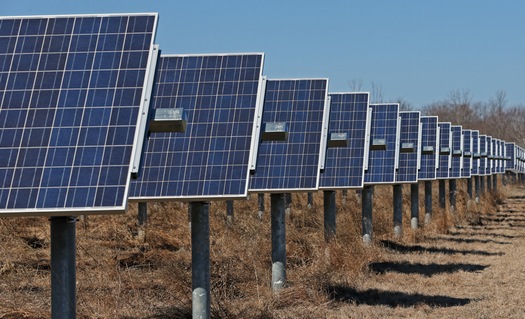
Matt Doll, Minnesota Environmental Partnership
For much of our history as a state, coal was king when it came to generating Minnesota’s electricity, followed by nuclear power not far behind. It brought with it air pollution and a hefty share of the state’s contribution to climate change. It also meant that state dollars have flowed outward for years to buy coal from Wyoming, gas from North Dakota, and uranium from western states and abroad.
Fortunately, times have changed: since last year, coal and nuclear have both been dethroned by homegrown renewables, which generated almost 30% of the energy that powers our homes. A large majority of that power came from wind turbines, primarily in the southern parts of the state like Buffalo Ridge, soon to be home to a major new hybrid wind and solar project. As that story illustrates, solar’s rise alongside wind in the North Star state is a big success story for our climate, health, and ecosystems, and it’s poised to accelerate.
Last year, solar panels provided almost 4% of Minnesota’s electricity. That might not sound enormous, but it represents rapid progress from where we started. In 2007, when the state passed the historic Next Generation Energy Act, we had around one megawatt of solar generation capacity – only enough to power about 164 homes. In 2013 MEP and multiple partner organizations developed the “Clean Energy & Jobs” campaign, proposing that the state adopt a solar standard requiring that 10% of our electricity come from solar sources by 2030. Instead the legislature opted for a 1.5% standard by 2020 and a 10% goal by 2030.
Ten years later, it’s great to see that not only was the 2020 standard easily met, but we are well on our way to achieving the 2030 goal, even if it is not a required standard. Today, we’ve reached over 1,700 megawatts installed and counting, enough to power more than 200,000 homes. Panels can be seen on rooftops in Minneapolis, massive solar farms in Chisago County, and other installations across the state.
Pushing through challenges
As Minnesota’s numerous “snowbird” residents can tell you, we’re not exactly a sunshine state. Minnesota is in the bottom third of states for annual hours of sunlight. Yet solar is still proving to provide a viable energy source year-round in our state. Even with our natural conditions, as of 2021, we’re in the top 15 states for solar power, with more than 4,500 jobs in the industry. As we wrote in June, the Heights is an example of a Minnesota development that may rely on solar for virtually all of its energy needs. One of MEP’s key priorities is ensuring that clean energy training is available in communities of color to ensure they benefit from this transition.
This progress is a testament to state policies, like the Next Generation Energy Act and the 2013 Solar Standard, that Minnesota has put in place. It’s also evidence of how far the cost of solar has plummeted. Once among the most expensive sources of energy, as anticipated, solar is projected to become the cheapest source of power in the world within a few years. Combined with wind and storage technology, solar energy can meet most of our needs.
That’s not to say that solar power will replace all fossil fuels. While the economics are on its side, we still have to provide the political will to bring about the transition. At the local level, county boards have been known to block permits for solar installations based on misconceptions or political disagreements about solar.
Bottlenecks in supplies and approval by utilities, like the backup of applications to connect solar projects to Xcel Energy’s grid, also tend to disrupt progress. While Minnesota solar growth continues, it has not yet returned to its 2017 peak of over 400 megawatts of capacity installed.
A new wave of installations?
Minnesota’s drive for more solar looks poised to be reenergized by the Inflation Reduction Act. Analysts project that the IRA will help the number of solar panels in the U.S. quadruple by 2030, from 240 million to upwards of 950 million panels. The law also invests heavily in battery storage projects, a crucial support factor for ensuring that customers have access to reliable power when the sun isn’t shining, as well as expanded power grid infrastructure to transmit that power.
Additionally the IRA increases and extends tax credits for residential solar – previously set to expire in 2024 – for the next decade. That will help boost stability for consumers and installers, who previously faced uncertainty about whether they would benefit from the tax credit on projects installed in the next few years.
Now that this landmark federal legislation has been passed, however, Minnesota still has to ensure we take advantage of it. In many cases, we’ll need the state legislature to pass funding for clean energy projects to access federal matching funds, and to tailor our programs to help diverse and low-income communities – too often left behind by economic transitions – access these benefits. That means that organizations like MEP, partnering with our more than 70 member organizations and connecting with grassroots supporters, will be working hard to generate the political will for investments in our sun-powered future.
As the climate crisis becomes ever more apparent in the headlines, it should be clear to everyone that a clean energy revolution is a need, not a luxury. We know that Minnesotans are ready for this transition, and with local action bolstered by the IRA, we believe we can get it done.
For previous columns, visit mepartnership.org/category/blog/. If you would like to reblog or republish this column, you may do so for free – simply contact the author at matthew@mepartnership.org.